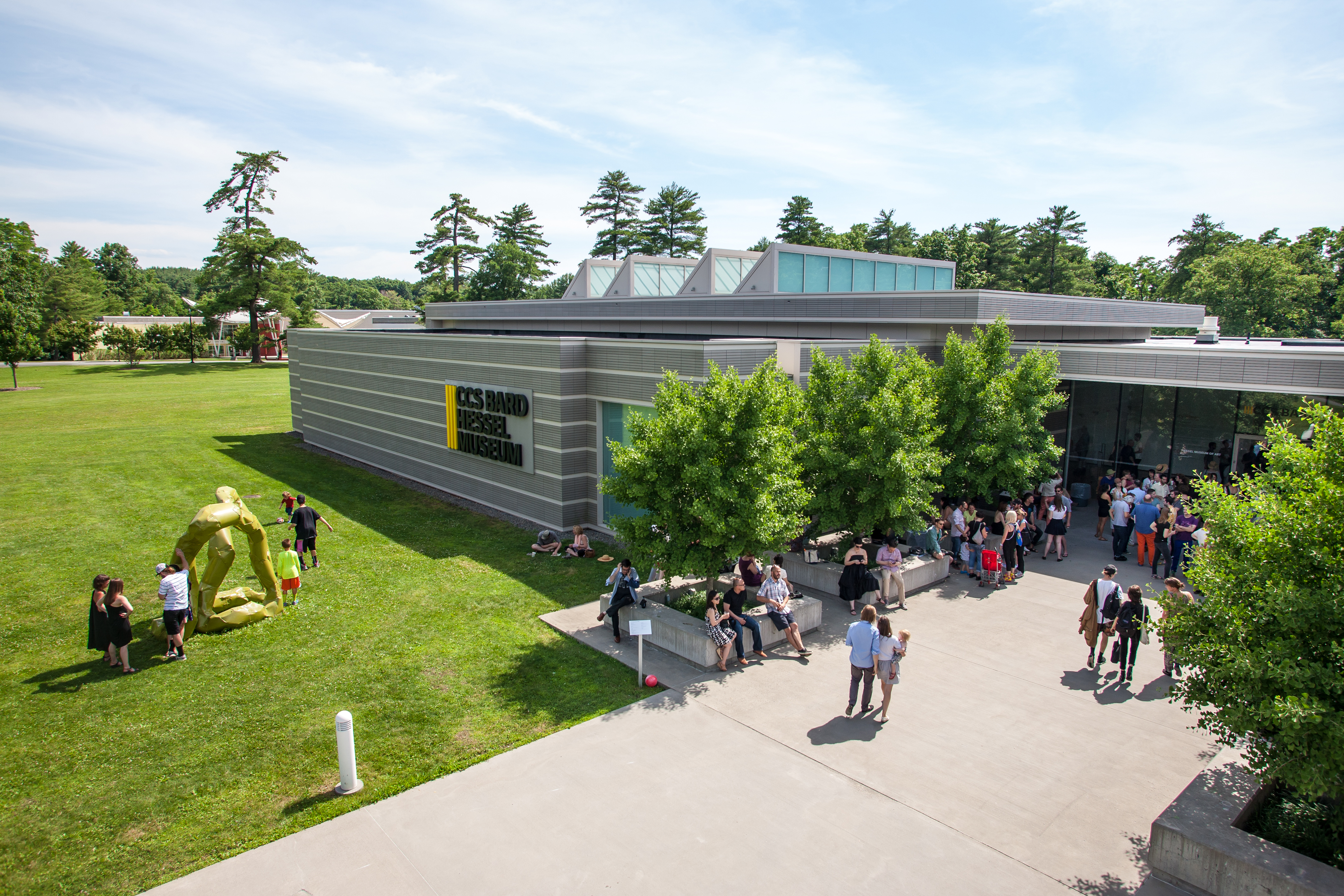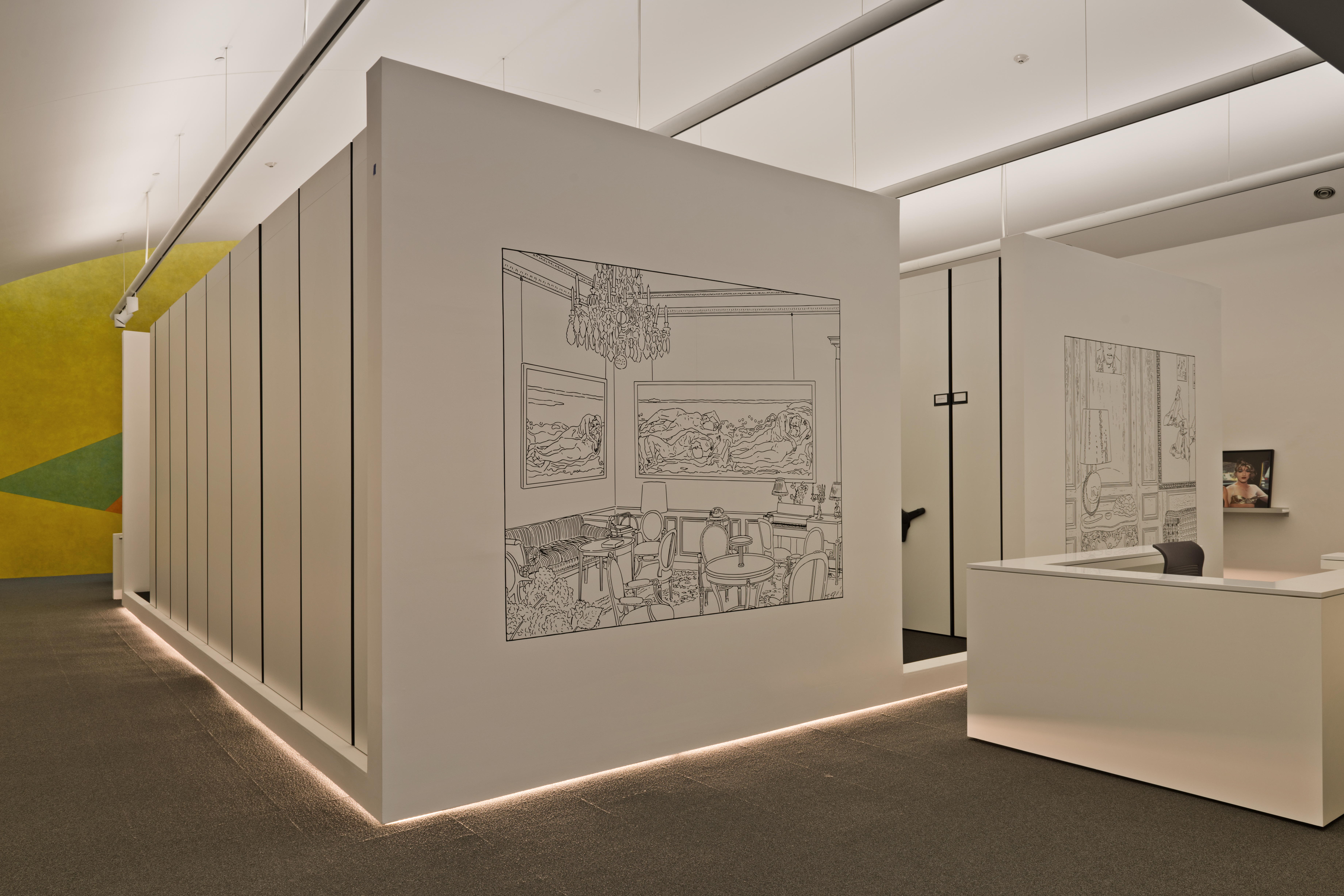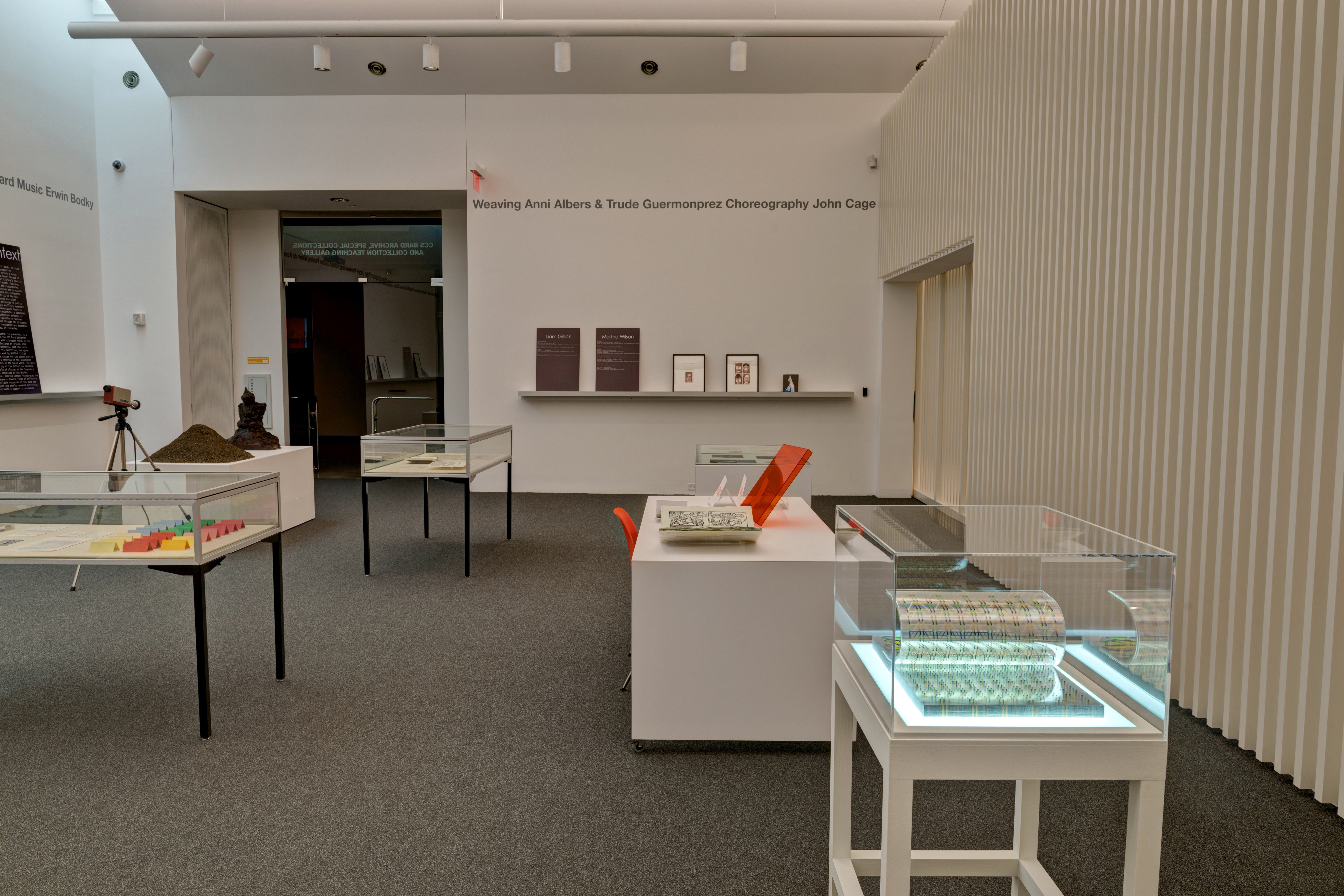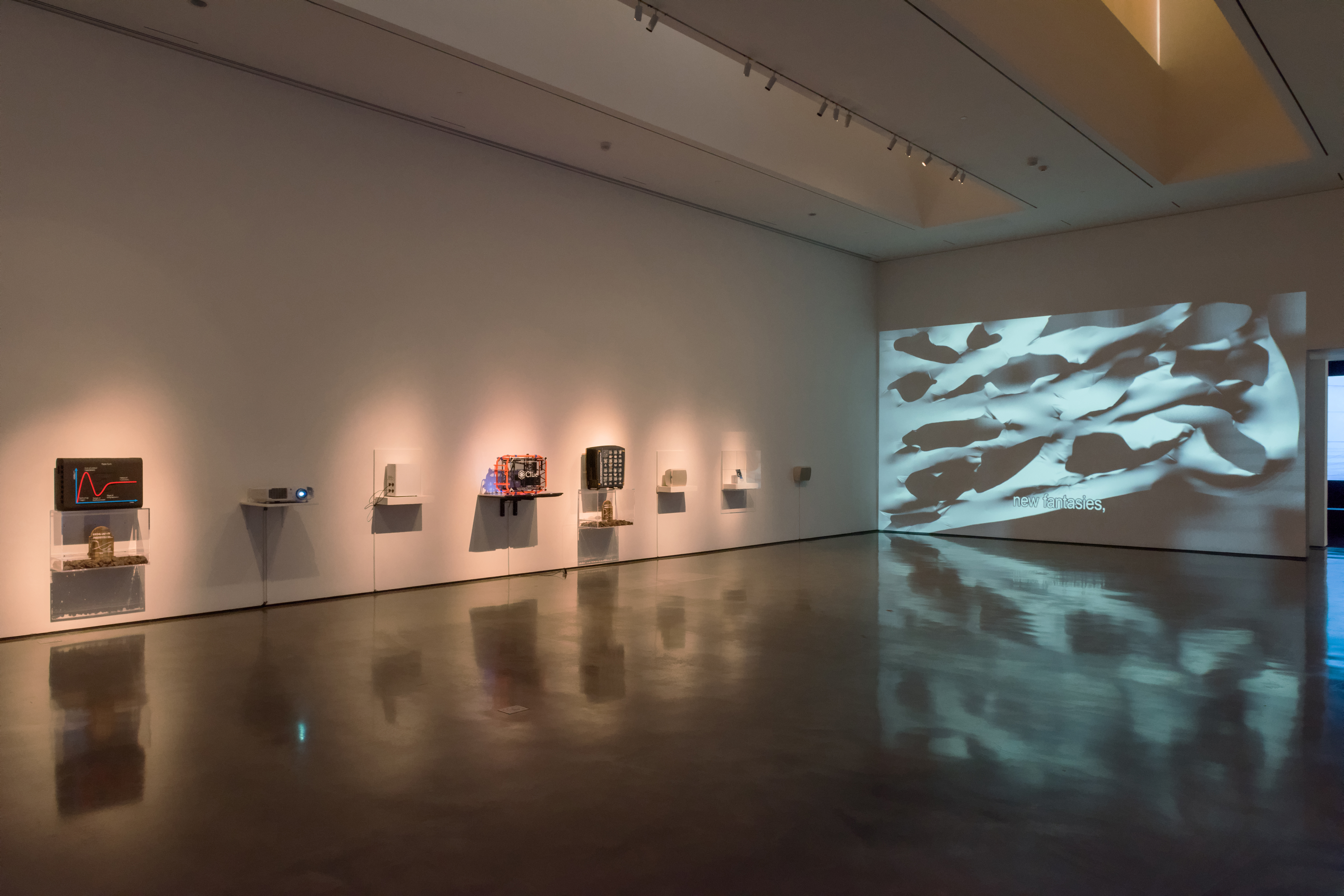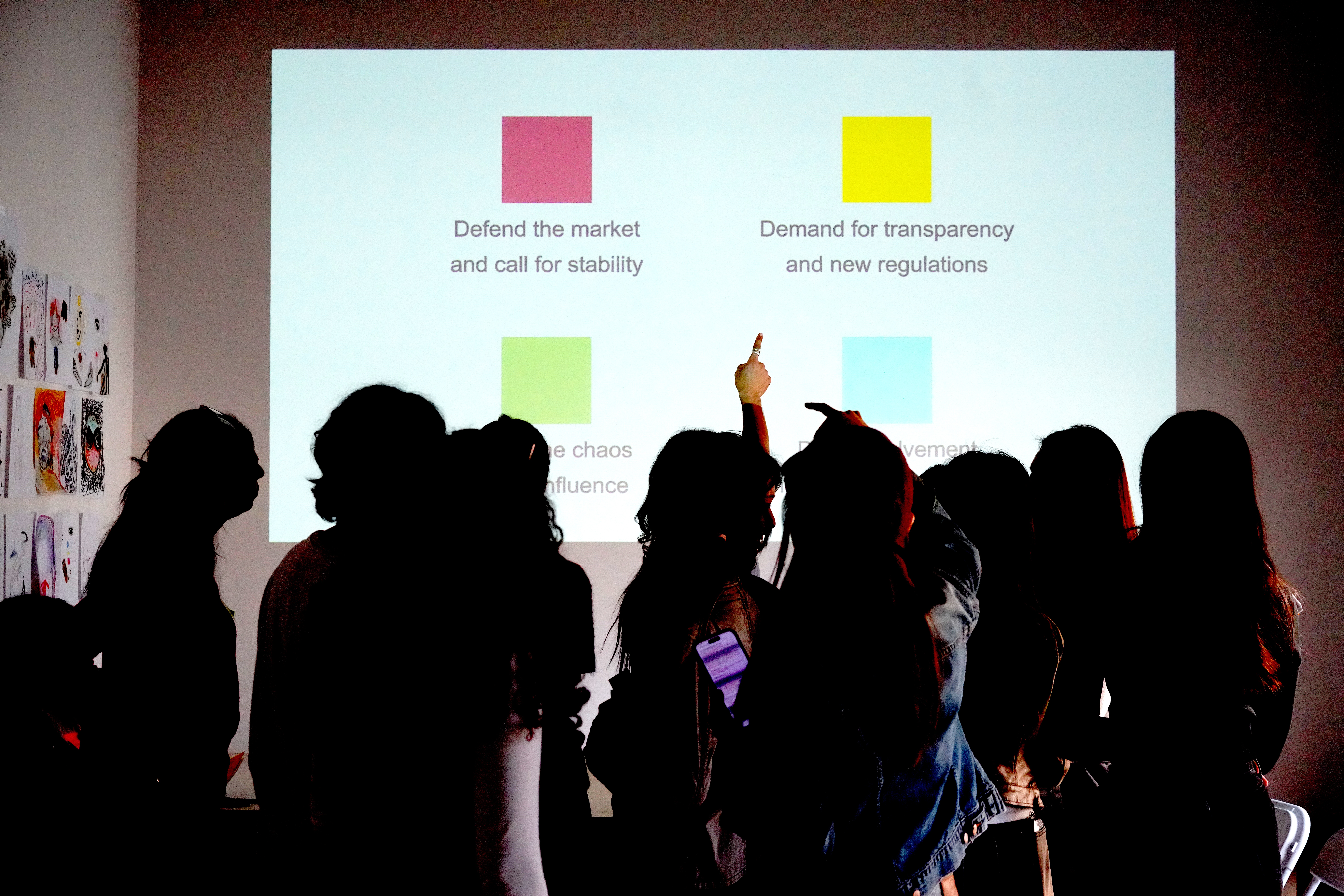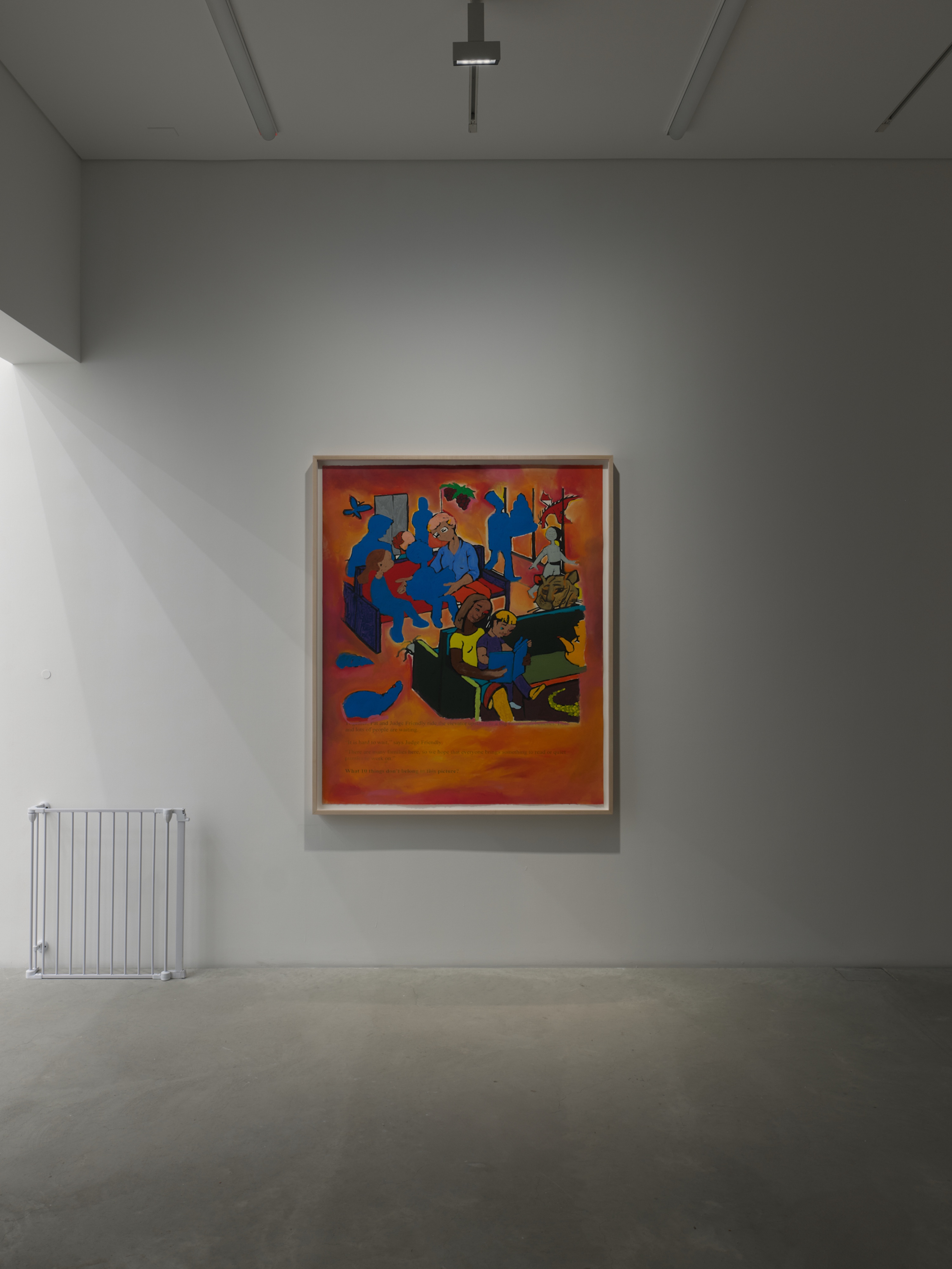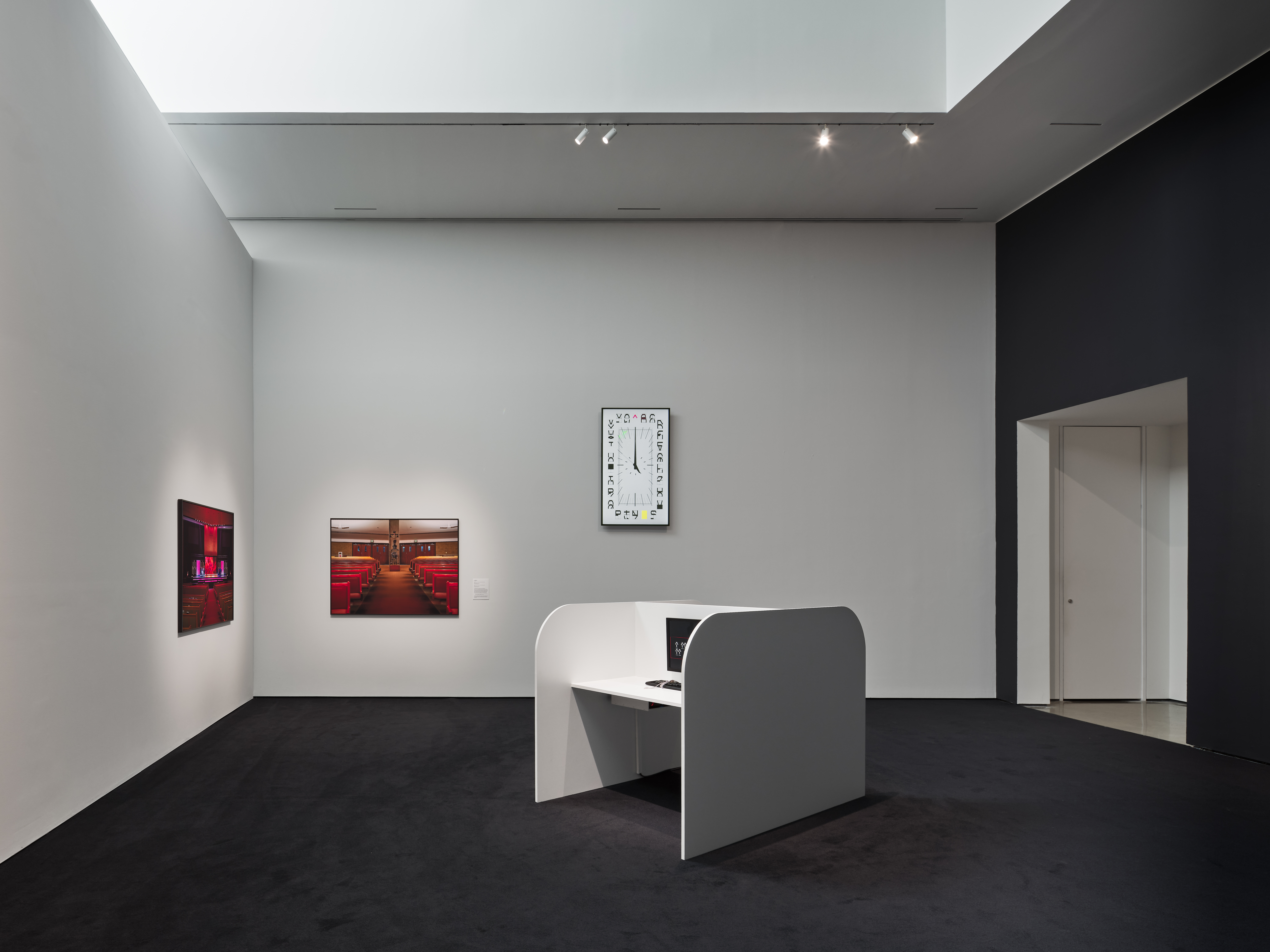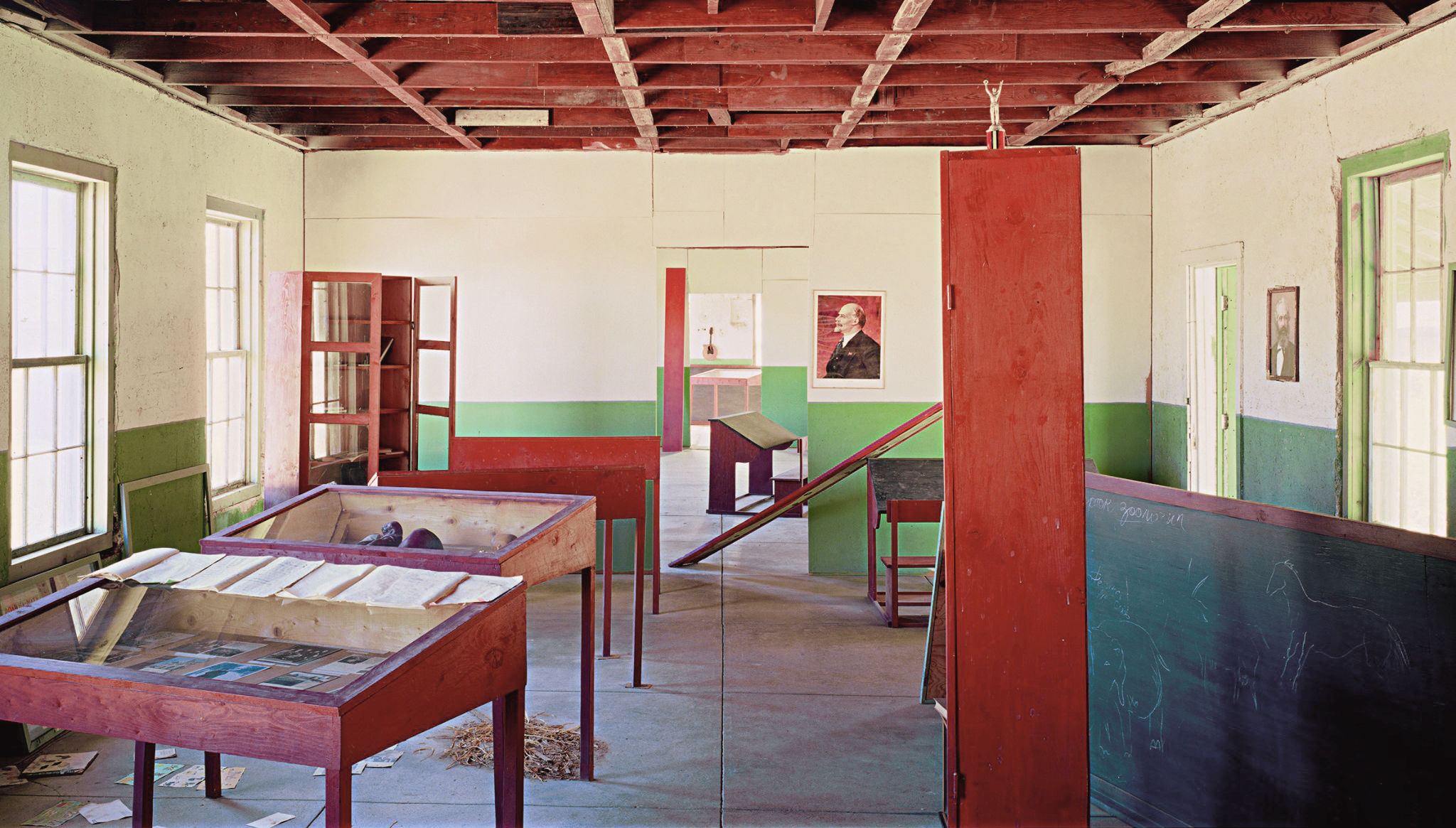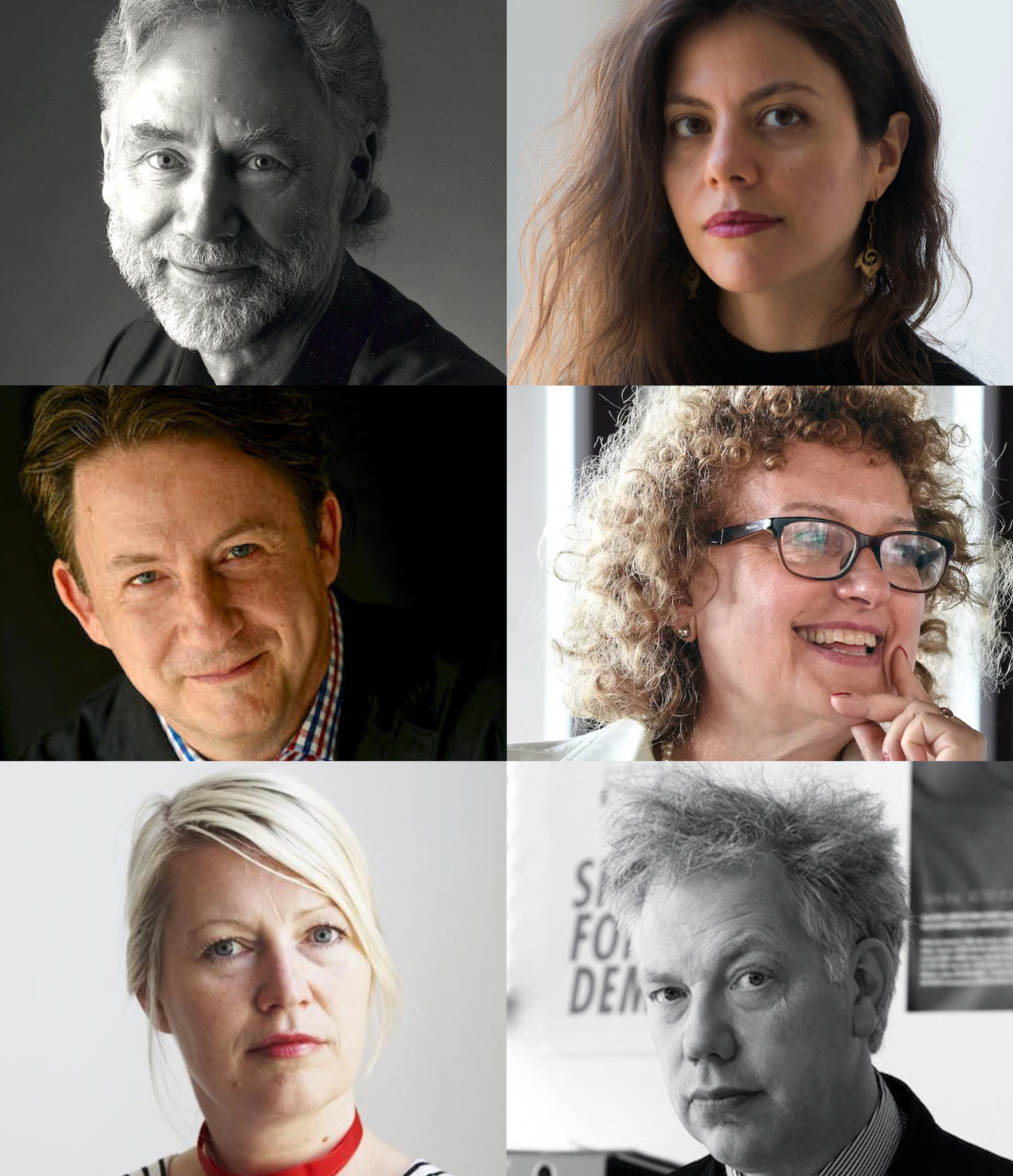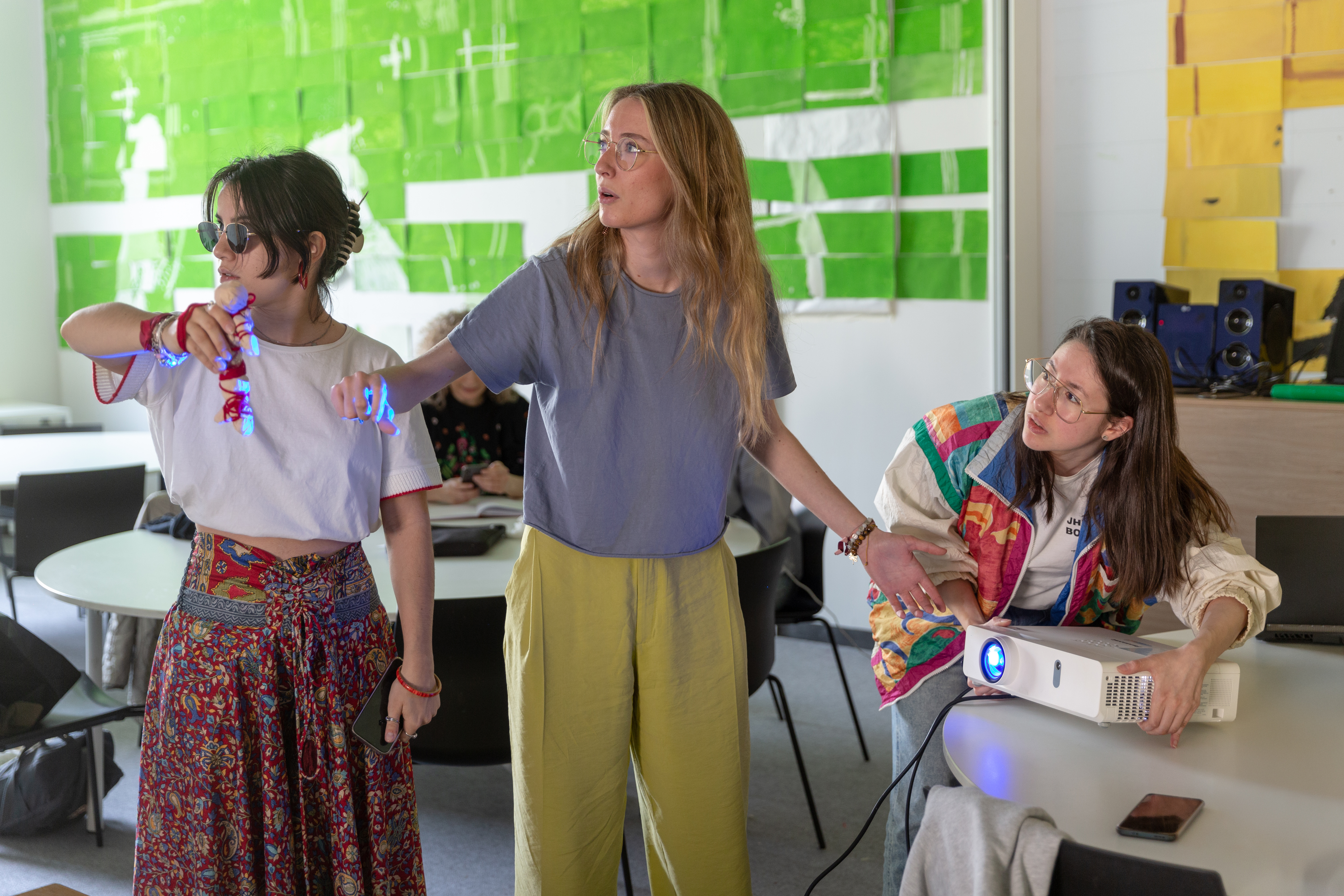http://www.bard.edu/ccs/
Lauren Cornell is walking to her new office at the Center for Curatorial Studies (CCS) at the Hessel Museum of Art, her boots clicking on the metal letters embedded in the concrete path spelling “intersecting things / ripped asunder” from Lawrence Weiner’s Bard Enter. As the director of the master of arts program in curatorial studies at Bard College, she follows in the footsteps of Paul O’Neill, Johanna Burton, and Maria Lind, but for the first time in the program’s twenty-three-year history, she is also the chief curator of the Hessel Museum, a dual-role Cornell advocated for. Executive director Tom Eccles has run the museum for the last decade, but in that time, Cornell said, “the program has become more ambitious and more layered. This seemed like a good point for someone to step up to help with the vision for exhibitions, and the logistics of it all.” Formerly curator and associate director of technology initiatives at the New Museum, Cornell still keeps New York City close, a Metrocard at easy grasp in her jacket pocket. The center and the museum are intertwined by design, occupying a large plus-sign-shaped building on a grassy knoll ninety miles north of the city, where many of the program’s prestigious alumni and faculty are based. When the museum opened in 2006 as a long-term home for the 1,400-work collection of Marieluise Hessel—who has been involved with CCS Bard since 1990 as one of its cofounders—the exhibition space of the former CCS Galleries doubled (at a cost of $10 million), and the curatorial studies program, too, entered a new chapter.
The evolution has continued since. In 2016, artist and former CCS Bard faculty member and graduate committee advisor Liam Gillick designed a $3 million expansion and interior remodel with architects HKWN, doubling the number of teaching spaces and classrooms in the school and dedicating the 3,600 Archives, Special Collections, and Collection Teaching area to emphasize archival materials as a core component of the work of the graduate program. The high-ceilinged teaching gallery is rimmed with a padded ledge upon which works of art can be rearranged and studied. “Historically, archives tended to be shuffled away somewhere, now with that space it becomes something primary,” Gillick said. A Sol LeWitt wall drawing and two Louise Lawler wall vinyls from the Hessel collection grace the space, as well as to Gillick’s Structured Expansion, which details the original schedule of classes at the legendary Black Mountain College in North Carolina. The new layout also represents a shift in the way that students are working, Gillick said. “A problem had started to come up with a lot of the students, because the making of an exhibition no longer necessarily constituted being in a big empty room. The study of exhibition-making also requires spaces of research and thinking, not just spaces of exhibition.”
Over the past twenty years, curators have gained increased recognition as cultural producers. Curatorial pedagogy has kept pace—CCS Bard is one of the oldest in the field—and many schools and art institutions, like the School of Visual Arts, California College of Arts, the Royal College of Arts, and de Appel, offer graduate-degree programs in curating or curatorial practice. To curate is to define a context for artworks, with context often generating both meaning and value. The curator’s activities may include: collaborating with artists to speak to the public, arbitrating a calendar of museum exhibitions, commissioning public art projects, borrowing artworks, conducting archival research, determining artworks’ installation, negotiating expenses, editing and writing catalog texts, visiting studios, advising new acquisitions, selecting artists for a gallery’s group exhibition, and hammering works to a wall in someone’s garage. And while they seem to perform many different kinds of labor, perhaps their most important role is determining which voices are amplified over others. The term “curator” once referred to a conservator stolidly guarding a collection, but today a curator moves more ephemerally between spheres, from the highest echelons of wealthy collectors to the scrappiest of artist’s studios. It is this very ability to slip through the strange interstices of our evermore networked society that makes a curator the quintessential practitioner of our time.
Bard’s graduate committee comprises some of the most well-regarded names in the field. Among them are Cornell, Eccles, and Gillick, and Ann Butler, Evan Calder Williams, Christoph Cox, Lia Gangitano, Chrissie Iles, Ruba Katrib, and Jeannine Tang. Together, they are responsible for admissions, as well as advising and evaluating students on their major projects and their thesis exhibitions. “We often argue among ourselves in front of the students,” Gillick says, reflecting on the value of articulating different viewpoints while also lamenting that the TV talent show “hot seat” approach has become highly stressful. In their first year, students organize exhibitions of works from the Hessel’s collection, which means having access to some world-class artists—Haim Steinbach, Rachel Harrison, and Martin Creed (who have been the subject of solo exhibitions at the museum), and Louise Bourgeois, Felix Gonzalez-Torres, Robert Mapplethorpe, and Isaac Julien, to name only a handful of standouts. In the second year, students prepare a written proposal for their thesis, often working with artists outside the collection, and concluding their time at CCS Bard with an exhibition in the Hessel’s galleries.
But perhaps even more than the artworks, the CCS Library and Archives are of utmost importance to the program. Students study contemporary art practices since the 1960s, primarily through exhibition histories, and via catalogs, archival images, and other rare documents. This approach charts an unusual course through the history of art, thinking about exhibitions critically as a form, and considering the modes and methodologies through which art has been shown, as distinct from art history. The library is a well-loved resource under the leadership of Ann Butler, who also teaches a course on critical collecting practices. When the Hessel Museum opened, Marieluise Hessel donated approximately fourteen thousand volumes from her collection to the CCS Bard library, which has grown over the last eleven years to house more than thirty thousand volumes, with acquisitions ongoing. Butler’s contributions to the library’s holdings are sourced not only from top-tier art institutions but from more obscure organizations, including limited-run and influential smaller journals, documents from curatorial and artist estates, and video and sound recordings by artists. “Exhibition history isn’t that canonized. What’s interesting about the program is there is a lot of research and work to be done, and the library is a really good teaching tool,” remarked recent alumna Alexis Wilkinson from the bar at Knockdown Center in Queens, where she programs exhibitions and performance.
Prior to her time at Knockdown Center, Wilkinson held positions at art institutions that have strong CCS contingencies among their staffs, like the Sculpture Center in New York and, before enrolling, at the Hammer Museum in Los Angeles. Many alumni are clustered in New York, engrossed in a scene some find myopic. Speaking anonymously, one alum said, “There is an attitude that if it’s not happening in New York, it’s not important. People outside of that context sometimes felt like they weren’t taken seriously by their peers.” Beyond the fixation on the city, they continued, “There was also an assumption that we have a foundation of art history from the Western canon, which was difficult for international students and occasionally contentious. There were heated moments and questions of what type of knowledge is valuable.” Reflecting on frustrations with some of the baseline assumptions of the program, they gave me an incredulous look and said, “Think about what it means to be a curator in New York versus Cairo.”
When I visited the campus, the stillness was vast, save for the rustling of chipmunks scampering around the dense wood that abuts the Hessel’s parking lot. The library and classroom wing are full of windows and desks, and a scholar was poised at each, some staring off into the distance or at me as I approached. Owing to the small class sizes, fellow curators-in-training become close friends, sometimes roommates in nearby apartments, and, often, future colleagues and collaborators. “It’s usually a very tight-knit group,” said graduate program coordinator Amanda Bard fondly, referring to a recent joint birthday celebration. Each student enters with very different histories, ideologies, and research interests, and although “this is what actually drives the program,” according to Eccles, it is also a challenge “to learn a common language” in their first year. Eccles meant this literally as well as metaphorically, as not everyone is equally facile with the densely theoretical English texts on the program’s syllabi.
In an average class of fifteen, half of the students come from outside the United States. The current first-years are particularly international, with only three American students among them. Sometimes these varied worldviews make communication difficult, as in the first-year project in which students work in teams to create an exhibition from the Hessel collection. “It’s like speed dating,” said first-year student Srinivas Aditya Mopidevi. Having worked as a curator at Devi Art Foundation in New Delhi and with Raqs Media Collective, he described himself as oriented toward developing ideas in close conversation with artists, while his peers approached the project from other curatorial perspectives. “We’re more than an American university” said the Scottish-born Eccles slightly smugly, smoke curling upwards from a cigarette between his fingers. In some ways, CCS works against the bias of the Western-centric art world through self-critical methods. The program’s self-described subjects of inquiry include but are not limited to: globalization and neoliberalism, modes of networks and distribution, technology and aesthetics, and spatial politics. Systemic critique occurs somewhat frequently, according to both a recent graduate and a current student.
But, as is the case with recent shifts in institutional attentiveness to bias, significant blind spots at CCS have become apparent. For instance, when Eccles came on in 2005, the program prided itself on being international, but the library held only English-language texts. “We’ve poured a lot of resources into not only collecting current publications from across the globe but also looking back historically and trying to backhoe this whole activity.” A larger question becomes apparent: What are the boundaries of curatorial studies? So many of the very foundational Western understandings of the curator as the figure who defines good taste are rooted in race-, class-, and gender-based prejudices, and compounded by disproportionate access to resources. How far should corrective historical approaches go in order to account for current cultural forms? If beyond the walls of academia a curator is someone trusted to direct resources toward individual artists and creative communities, the role finances play in this line of work and the work of an institution that produces curators cannot be ignored.
Eccles and Gillick both used the word “nightmarish” to describe the fundraising endeavors of the program, with one hundred percent of CCS’s budget coming from non-Bard College sources. But Eccles was proud to mention that the budget has tripled under his leadership. Eccles often steps outside and paces on the museum’s patio to make these calls. “Students see me on the phone asking for money,” he said. “Fundraising is not an abstract part of what we do.” One of his main fundraising projects has been expanding the program’s board of governors. He has been able to develop CCS’s offerings by homing in on each governor’s area of specific interest, whether the library, student exhibition funding, or money for travel. “We do an annual trip, to Berlin, Frankfurt, Istanbul—this year was to Documenta, both in Athens and Kassel,” he explained. Travel is a big part of the program: between their first and second years, students participate in the Professional Development & Mentorship Placement fellowship program with an institution, and many spend the summer in Europe, using the class trip as their ticket to ride. “The other part of the funding puzzle is to create a series of partnerships with other organizations,” Eccles explained, for instance, with the LUMA Foundation in Zurich, Switzerland and Arles, France, which sponsors a fellowship at CCS. And though Eccles is a master of networking and raising funds, students are not particularly encouraged to dwell on the practical side of curating where these concerns are paramount.
“We are not a professional finishing school in any form whatsoever. I imagine we actually un-finish some people,” Eccles said wryly. Just how preprofessional is CCS Bard? The answer varied dramatically between students and alumni based on their experiences prior to the program. Some students arrived straight from undergraduate programs, but the majority had significant professional experience. Some were frustrated that coordinating loans and managing installation logistics amounted to a waste of their time, while others wished for more nuts-and-bolts lessons, such as making digital 3-D exhibition models or organizing funds for exhibitions. “In hindsight, I think more emphasis on practical skills like making budgets and fundraising would have been useful,” said alumna and New Museum editor Dana Kopel. “But I understand it can be difficult to make time for that alongside the important research-based work that CCS prioritizes.” Other alumni and students I spoke to felt that the practical side of exhibition-making was indeed well-foregrounded. “You must go through every step,” said one recent graduate. “You submit an exhibition proposal, a checklist, and figure out all the logistics—pedestals, vinyl, publication, programming—and if you don’t do it, you fail.”
Gillick disagreed with the very binary of this discussion: “I don’t see the dichotomy between theory and practice.” Because the field of curating was “underconsidered” when he began his career, he supports those who veer toward “over-thinking it.” Gillick continued, “I encourage people who seem a bit more practical to get stuck into some really esoteric thinking” at least while they have the chance. Even those who “get deep into research, reading, and paper curating” will soon go off and spend the next decade working in institutions; they will have the rest of their lives to deal with the concrete problems. Gillick emphasized CCS Bard’s ethos of considering knowledge production structurally. This does not always entail putting artworks together, or rather, supposedly exceeds it. “There’s always this mistake—people think we teach curating—we don’t,” Eccles said, articulating that curatorial studies does not equate to a practical training, although many students use it as entry to work in the field. He relishes the opportunities for research, close reading, and deep thought that take place at CCS. To Eccles, CCS is “a place to think.” After graduating, one may not have such leisure.
Perhaps the most preprofessional skill the program espouses is getting along with others. “You are in the woods in the middle of nowhere, you have to learn to work together,” said alumna Kopel. The program can feel competitive, as many students have similar postgrad goals. “The stakes feel super high,” another alum offered. “You are in the best school in the United States to do this thing. If you go there and do well, you can get launched into a huge career.” How fully the program does so depends on one’s definition of “career.” Many young alumni are rich in cultural capital but deeply in debt. They often take up independent gigs that come more readily than institutional positions—publishing freelance art criticism, taking temporary curating fellowships, or working with pop-up shows and biennials. Financial precarity often characterizes this kind of work, which can seem far more glamorous than it is. According to Eccles, the average student pays around $20,000 per year in tuition, although the sticker price is $40,000. Even though the college awards $350,000 to $400,000 each year in scholarships, most students juggle loans in order to attend. For international students, CCS devises unusual collaborations sometimes over several years to help drum up tuition funds, be it through collectors or foundations in their home countries.
CCS Bard’s prestige in the art world cannot be understated. Although the center rightfully prides itself on rigorous academics, it is certainly not immune from ego-driven pursuits. The ballooning attraction to curatorial practice in the past two decades is surely motivated to some degree by social cachet and access to an exclusive cultural milieu. In this sense, CCS Bard adds yet another layer of gatekeeping to a field already obsessed by the power to designate coolness through an apparatus of exclusion. The appeal of CCS for students who apply from all over the world is the promise of working with some of the art world’s most sought-after figures, and the program does offer a chance to hitch your wagon to those who have already become VIPs in the field. “It’s kind of nuts who you have access to,” agreed two current students, mentioning a writing workshop with Chris Kraus, a talk with alumna Fawz Kabra, and an off-campus project with K8 Hardy. Students come in with an understanding that CCS Bard provides a “very valuable professional network,” said alumna Kopel. A veritable cabal of CCS grads runs some of the world’s hippest institutions and taste-making venues in New York like the New Museum, Sculpture Center, and the Artist’s Institute. Still, Eccles contended, “there is no distinct Bard style,” demurring that students’ own interests are widely varied and shape both the direction of the program and their continued work in the field after graduation.
A shelf in the library holds the bound volumes of proposals for thesis exhibitions, a requisite for completing the program, from alumni since the first graduating class; among them are Cecilia Alemani, Orit Gat, Daniel Byers, Gabi Ngcobo, Simone Subal, Jenni Sorkin, Sofía Hernández, Chong Cuy, Roxana Fabius Rozenbaum, Anat Ebgi, Wendy Vogel, Tyler Emerson-Dorsch, Sohrab Mohebbi, Chus Martínez, Bartholomew Ryan, Jenny Jaskey, Ruba Katrib, Natasha Marie Llorens, and Laurel Ptak. “There are constant phantoms of these former people who can seem quite grand from a distance, but I remember a lot of them as being just as nervous and unsure as anyone else,” Gillick reminisced.
“Curating school is the new art school” one student said, and for better or for worse, “it is becoming more popular as an open-ended form of study.” The term has entered broader parlance as well, in ways that can be irksome and even duplicitous, with algorithms that curate our shopping and listening preferences, and marketing that mistakes commerce for connoisseurship. The underbelly of the “curated experience” is the removal of anything unsavory or unwelcome to prioritize the client’s comfort. The concept extends as far as the neighborhood context, in which real estate developers aim to filter out working class residents, often in tandem with art galleries using emptied space for “high culture” luxury offerings. Recently, we have seen examples of exhibitions that refuse accountability when it comes to aesthetics that shore up white supremacy and presumed sovereignty over space, like Omer Fast’s exhibition at the Lower East Side’s James Cohan Gallery that mimicked the look of a dingy Chinese waiting room, an inaccurate attempt to restore the space’s prior appearance. It was at a protest in front of the gallery that I spotted one second-year CCS student and took heart.
As contentions over art’s role in the displacement of disadvantaged communities have erupted with increasing regularity in urban settings, the moral and political commitments of a curator have become harder to ignore. These concerns can seem out of sight at CCS given the program’s bucolic surroundings and out of mind with its emphasis on often-abstruse intellectualism, but after the protest, the student told me that politics at CCS Bard “are not swept under the rug, but ultimately the challenges of then bringing these issues into a conventional museum setting do remain.” Whether or not they choose to tackle such issues in the many curatorial settings alumni have found themselves, students will leave the program equipped with critical knowledge of theory and historical precedents, along with many connections to movers and shakers in the art world, to reevaluate curators’ future responsibilities. “We give the students a framework to talk about things that are hard to talk about,” Gillick elucidated. “This is a really valuable thing.”
—Vanessa Thill
